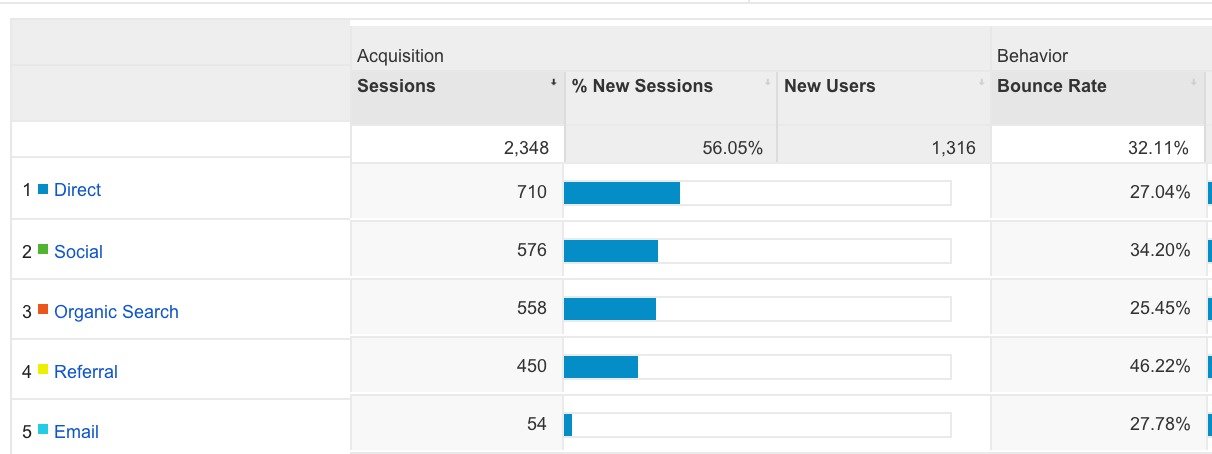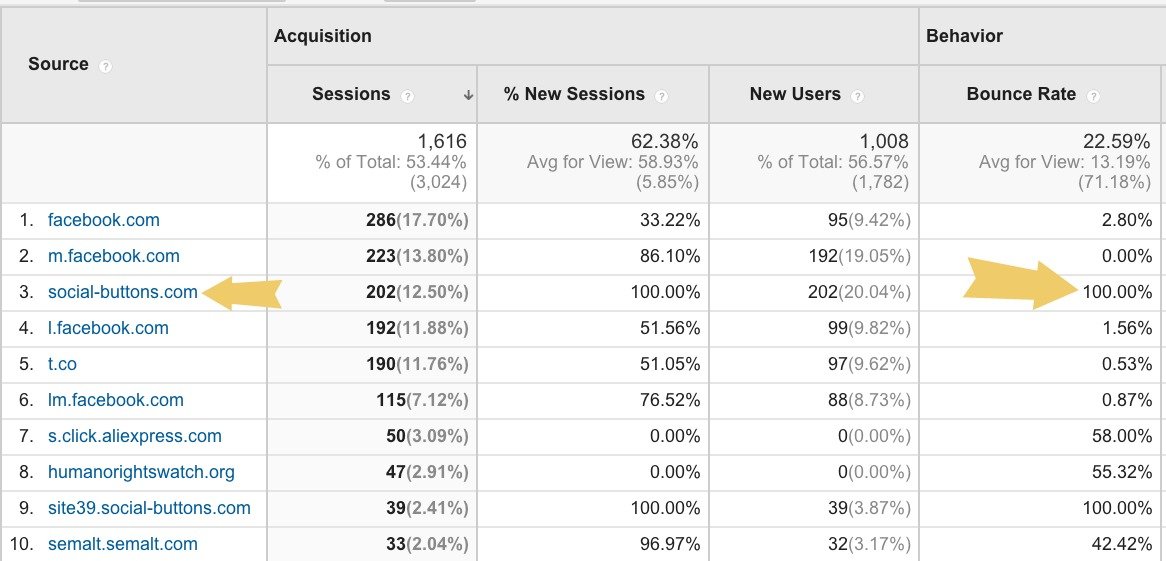
Over the past year, I can’t even tell you how many times I’ve had this exact conversation with a fellow business owner on how to use Google Analytics.
Creative, coach, consultant, doesn’t matter. The conversation goes something like this.
Me: “That’s great. How are you measuring that? Do you have your conversion results or other metrics so we can see what’s really working?”
Biz Person: “Well, I’ve got Google Analytics and I’m not really sure how to figure that out.”
And…scene. This conversation happens on average two to three times a week.
While we’re completely brilliant at what we do, very few of us actually want to do things like figure out Google Analytics. So this treasure trove of information goes unused or ignored. Or we log in, click around a bit and then don’t really know what to be looking at.
But don’t worry, I’ve got you covered. Today things are going to change as I share six secrets within Google Analytics for your blog or business, all in plain English. My goal is to provide you with enough knowledge to get in and get out of Google Analytics at least once a month.
Here’s a short and sweet guide on how to use Google Analytics.
#1. Make Sure your Google Analytics is Installed
Before we dig in, make sure your Google Analytics is actually installed. Don’t assume that your designer or developer added this to your site or that it’s installed correctly.
Login to your Google Analytics account here and make sure your site shows up. Then make sure it’s actually reporting your traffic. If you’ve got no visits to your site or a low number, double check it’s all installed.
If you’re using WordPress, you can quickly and easily set it up using the Google Analytics by Yoast plug-in.
#2. Check Your Bounce Rate
You’ll find your bounce rate under Audience Overview, which is the perfect place for you to start digging into your analytics. Numbers like new vs. returning users or page view are pretty self-explanatory, but one of those numbers is a bit of mystery – the bounce rate.
Bounce rate is a valuable metric as it tells you how many people visited only one page on your site. Ideally you should have a bounce rate of 30-40% or lower, but keep in mind that if you’re a blogger and people come to your site to read a single post, it may be higher.
Bounce rate can be an indicator of poor user experience on your site and lacking a clear path for visitors on your site. Keep a firm eye on bounce rate over time to see if you may need to redesign your site, update your copy or be more intentional about the visitor’s journey on your site.
#3. Acquisition Overview
Next up, head over to the Acquisition section. You’ll want to look at the overview for your site to see how people are actually arriving on your site.
This report helps you understand what’s working when it comes to driving people to your website and what’s really not. This gives you a bird’s eye view of your social, SEO and referral efforts, as well as how many people come to your site directly.
If you’re focusing a lot of time and energy on driving traffic to your site, but you’re not seeing a lift in social, referral or SEO traffic, you may need to reassess. You can also drill down on each of these areas to see what’s going on.
#4. Look for Spam Traffic
If you have a website, guaranteed you likely have some spam traffic. The best way to figure it out is to go to Acquisition > All Traffic > Referrals.
When you open up your referrals, look for sites with weird names. If you’re not sure, check the site’s percentage of new sessions and/or bounce rate. Ones that are close to 100% are a surefire sign of spam traffic.
You may find that you have a lot of spam traffic! Not to worry, as you’ve got options. First and foremost, if you’re on a WordPress site, install the SpamReferrerBlock Plug-In to help you resolve it. Depending on the type of spam you’re dealing with this, this may do the trick.
You can also filter those in Google Analytics so they’re simply not included in your analytics. Results may vary with this, but it’s worth a shot.
The biggest thing is to keep in mind that your numbers may be skewed thanks to these dodgy spammers, and you might need to look at your data with that filter.
#5. Social Traffic
If you’re blogging or have a website, guaranteed you’re on social media in an effort to drive traffic to your content.
It’s one thing to be on social media posting and sharing, and it’s completely another to be using it effectively to send traffic to your site. Instead of wasting time on what’s not working, look at what is and do more of that.
Go to Acquisition > Social Media > Overview to check out what’s what.
Looking at the overview you can see what social sites are driving traffic to your site.

Then you can click on each one to see what specific posts are most effective. I recommend you watch this trend over the course of a few months to understand what social networks and what type of content is working best for you. For example, here are what blog posts were driving traffic on my Maggie Patterson site back from Facebook:
#6. Track Conversions
The ultimate goal of your website should be to “convert” visitors into action. That action could be to sign up for a piece of free content or to purchase something. A conversion is what occurs when they complete the desired goal.
By tracking your conversions, you start to get insight into if your site is helping you meet your goals or not. And if you’re not reaching your goals for subscribers or sales, you can start to improve things so they go up over time.
There’s no point in focusing on traffic to your website if it doesn’t convert.
The good news is that Google Analytics makes tracking conversions easy. All you need to do is set up a goal in Google Analytics. Once you know how to do that, you can literally do it in minutes flat.
Check out this video that walks you through the process:
The Recap: Use Your Google Analytics to Grow Your Business
If you’re running a business where your website matters, make time for digging into your Google Analytics each month. Even 15 minutes can make a critical difference and provide you with better data to make decisions.






